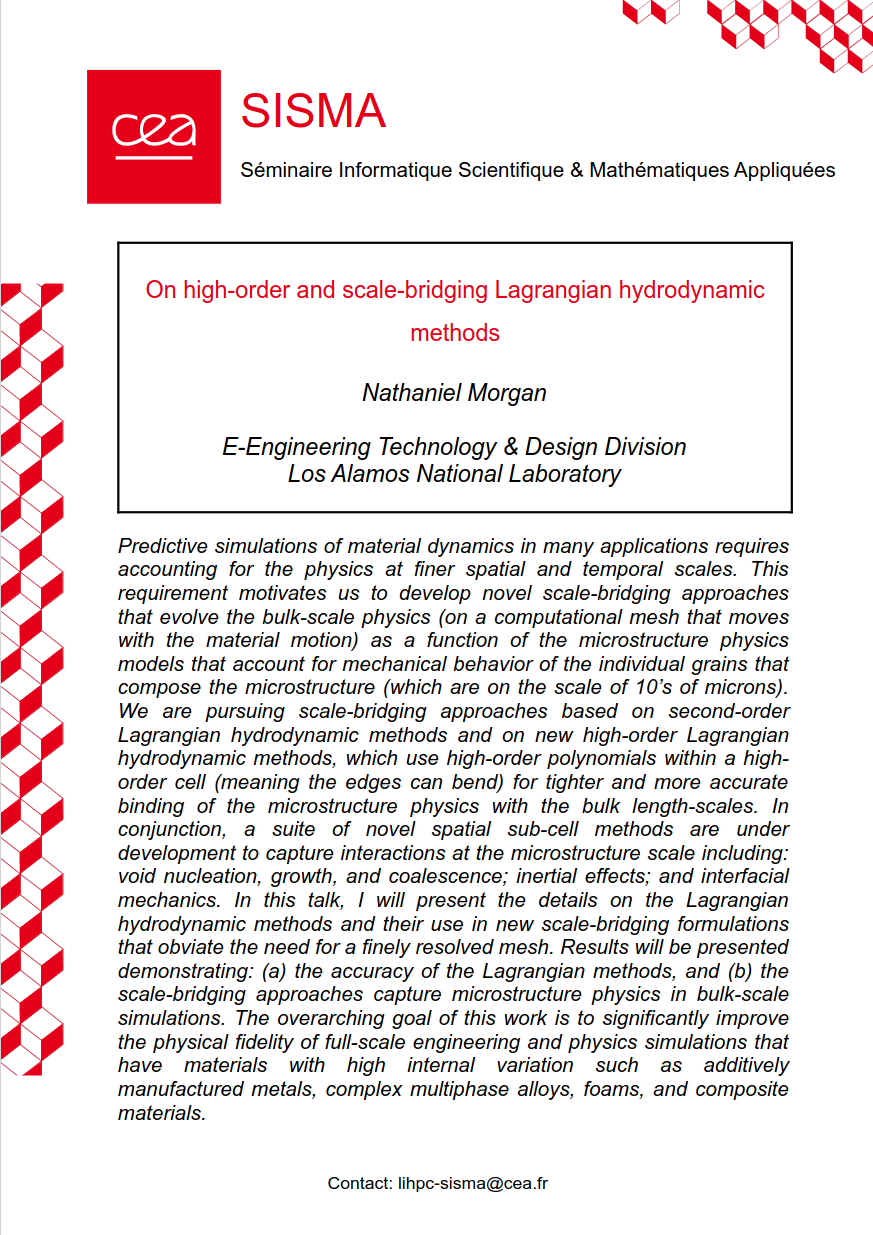Predictive simulations of material dynamics in many applications requires accounting for the physics at finer spatial and temporal scales. This requirement motivates us to develop novel scale-bridging approaches that evolve the bulk-scale physics (on a computational mesh that moves with the material motion) as a function of the microstructure physics models that account for mechanical behavior of the individual grains that compose the microstructure (which are on the scale of 10’s of microns). We are pursuing scale-bridging approaches based on second-order Lagrangian hydrodynamic methods and on new high-order Lagrangian hydrodynamic methods, which use high-order polynomials within a high- order cell (meaning the edges can bend) for tighter and more accurate binding of the microstructure physics with the bulk length-scales. In conjunction, a suite of novel spatial sub-cell methods are under development to capture interactions at the microstructure scale including: void nucleation, growth, and coalescence; inertial effects; and interfacial mechanics. In this talk, I will present the details on the Lagrangian hydrodynamic methods and their use in new scale-bridging formulations that obviate the need for a finely resolved mesh. Results will be presented demonstrating: (a) the accuracy of the Lagrangian methods, and (b) the scale-bridging approaches capture microstructure physics in bulk-scale simulations. The overarching goal of this work is to significantly improve the physical fidelity of full-scale engineering and physics simulations that have materials with high internal variation such as additively manufactured metals, complex multiphase alloys, foams, and composite materials.




